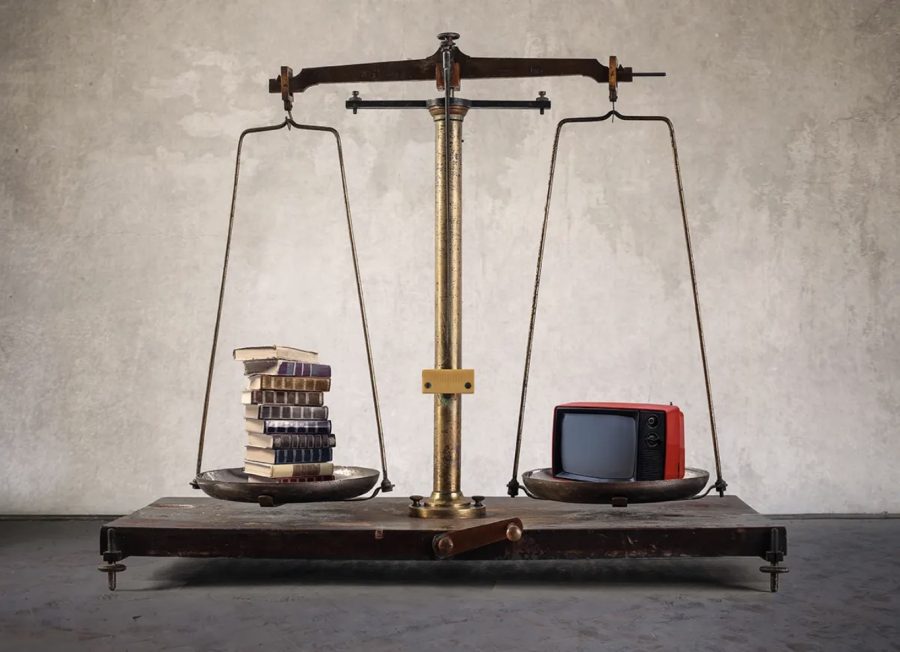It is easy to get caught up in the ever-changing digital media landscape, tweets, videos, memes, and viral blogs. Medium Theory, however, serves as a reminder that communication style can be just as significant as content. Medium Theory, popularised by academics like Marshall McLuhan and Harold Innis, examines how a medium’s features affect social interaction, human perception, and cultural transformation. Re-examining this idea offers important insight into how digital technologies influence not just messaging but also our own thought processes in a time when smartphones, social media, and algorithmic feeds rule the day.
What is Medium Theory?
Medium Theory examines the role of the medium itselfŌĆöthe form and technology through which communication occursŌĆörather than focusing solely on the content it conveys. According to McLuhan (1964), ŌĆ£the medium is the message.ŌĆØ This expression implies that, regardless of the material being presented, every medium, print, television, and social media incorporates its own social and psychological impacts. For instance, reading the news online or seeing it through a TikTok video produces a distinct mental and emotional experience than watching it on television.
Harold Innis (1951) expanded on this by claiming that media can be categorised as either space-biased or time-biased. Manuscripts and stone carvings are examples of time-biased media that promote tradition and continuity by preserving knowledge over extended periods of time. On the other hand, space-biased media, such as the internet or radio, swiftly spread knowledge over great distances, encouraging growth and transformation. Innis’s framework offers a basis for comprehending how contemporary communication patterns are impacted by the immediate, global, and fleeting qualities of digital media.
The Digital Transition: Medium Theory in the Social Media Era
The relevance of Medium Theory has increased due to digital media. In the context of sites like Instagram, TikTok, and X (previously Twitter), McLuhan’s theories regarding the sensory and social effects of media become even more clear. Users’ interactions and the kinds of material they create are influenced by the design of each platform. For example, Twitter’s character limit promotes brevity and immediacy, frequently at the sacrifice of complexity, whilst Instagram prioritises visual narrative and encourages the collection of idealised lifestyles (Baym, 2015). Quick, visually appealing, and emotionally charged content is rewarded by TikTok’s algorithmic personalised short-form video format (Cotter, 2019).
Here, the medium, short-form video determines both the pace of cultural trends and the communication style. Users adjust to the social and technological conventions of each platform, supporting McLuhan’s claim that media “work us over completely” (McLuhan, 1964, p. 26). This effect shapes social ideals related to attention, visibility, and authenticity, going beyond individual behaviour.
Media Ecology: The Network of Mediums
Media sustainability, which sees all media as interrelated systems that influence human contexts, developed from medium theory (Postman, 1970). Our media environment is made up of several technologies that interact and influence one another, much like an ecosystem is made up of interdependent species. For instance, while television used to be the primary medium for mass communication, it now coexists and faces competition from social media, streaming services, and user-generated content platforms.
Understanding how digital convergence blurs the lines between conventional media formats is made easier by the nature of media. A single news story can be presented as a series of tweets, a podcast talk, a written article, or a YouTube video. The idea that the medium itself modifies the message is reinforced by the way audiences interact with the same information in each format.
Medium Theory Criticisms
Medium Theory has been critiqued for scientific determinism, the idea that technology alone drives social and cultural change, despite its lasting influence (Williams, 1974). Critics contend that political circumstances, economic forces, and human agency all influence how people use and comprehend media. For example, although social media platforms have the potential for open communication, corporate interests and algorithmic systems that optimise profit through participation also control them (Fuchs, 2017). As a result, the medium’s power cannot be separated from the larger structures within which it functions.
Conclusion: The Message Is Still Important
For the analysis of digital communication, medium theory is still an essential instrument. McLuhan’s observation that “the medium is the message” is more relevant than ever in a world where technology is constantly changing how we interact, consume, and create. We can become more critical and self-aware communicators by being conscious of the biases and affordances of various media. The difficulty as digital media develops is not only to consider the messages we convey, but also how the medium itself alters the impact, pace, and significance of those messages.
References
Baym, N.K. (2015) Personal Connections in the Digital Age. 2nd edn. Cambridge: Polity Press.
Cotter, K. (2019) ŌĆśPlaying the visibility game: How digital influencers and algorithms negotiate influence on InstagramŌĆÖ, New Media & Society, 21(4), pp. 895ŌĆō913.
Fuchs, C. (2017) Social Media: A Critical Introduction. 2nd edn. London: Sage.
Innis, H.A. (1951) The Bias of Communication. Toronto: University of Toronto Press.
McLuhan, M. (1964) Understanding Media: The Extensions of Man. New York: McGraw-Hill.
Postman, N. (1970) ŌĆśThe Reformed English CurriculumŌĆÖ, in N. Postman (ed.) High School 1980: The Shape of the Future in American Secondary Education. New York: Pitman, pp. 160ŌĆō168.
Williams, R. (1974) Television: Technology and Cultural Form. London: Fontana.

